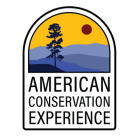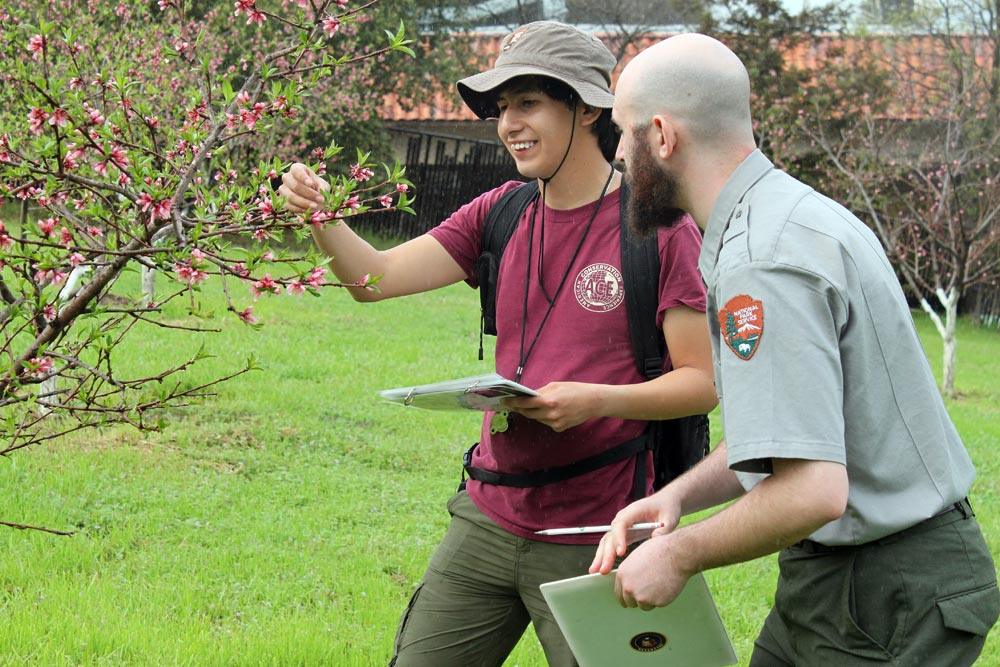Can you tell me about your background?
I was born in Mexico. I lived there until I was 9 years old. At that point my family moved to the United States and we’ve been living here in Martinez California ever since. I’m 23 years old and I’m currently attending Diablo Valley Community College in a nearby city.
In my high school they had a program called A New Leaf—A sustainable living collaborative. It’s kind of a combination of typical high school classes and also hands-on experiential learning. That program is actually what got me interested in outdoor fields and careers, and it’s what got me my internship with the National Park Service.
What got you interested in conservation initially?
There’s always been something inside of me that’s been drawn to the outdoors. I think that moving from Mexico to Martinez, CA plays a big part as well. In Mexico, I was only familiar with the urban environment: streets and stone houses, not much scenery. So coming here and being surrounded by undeveloped open hills and spaces is what got me interested in the outdoors. It made me think, “Wow! The world is so much different than what I’m used to!” Now I love going on bike rides to the marina downtown, going to parks, learning about new plants, birds, and insects, those sorts of things.
Can you tell me about a highlight and a challenge you’ve had during your internship?
The challenge has been getting used to working with a federal agency. Also, this is one of the first jobs I’ve had—before this I had just worked for family, or done side jobs here and there but I had never really had an official job. So getting used to all the aspects of a job like time management, being organized with all the paperwork, that’s been difficult.
As part of the work I do for this internship I get to work with high school students who are trying to figure out what they want to do in life. For me undoubtedly the biggest highlight is when I get to see people having fun in our National Parks and being outside and enjoying themselves. To be able to give that experience to other young people is by far one of the best things I’m able to do. I feel very lucky to be able to be a mentor.
What other tasks are part of your internship?
A few examples are the photo point monitoring project and the phenology project. For the photo point monitoring project, we take specific snapshots of a landscape and track how it changes over time. We photograph an area and record whether there is erosion or if invasive plants are growing.
The phenology project involves the study of living organisms and how they interact with the changing seasons. Birds migrating and plants blooming are some examples. We are studying the life cycle of different organisms. There is a California Phenlogy Project that monitors the native California plants and environmental changes. We use data sheets and smartphone apps to record any changes in the life cycles of the plant. For example: whether it has new flowers, leaves, or fruit. We observe the plant as it grows. All of our research goes to the database online, which is analyzed by scientists at the University of Santa Barbara. That data is passed on to other scientists and they publish newsletters and articles about what we’re finding. The most consistent discovery is that spring is coming 2 or 3 weeks earlier now. It’s a very hands-on project.
Do you have any goals for the future when you’re done with this internship?
Absolutely! I want to work on as many public lands as possible. I’d love to work at Point Reyes or Golden Gate, Pinnacles or Yosemite. I think Yosemite would be my dream job. I’d like to become an NPS ranger. I want to be involved in the natural resource conservation. Aside from teaching young people my passion is protecting the environment and protecting these resources for the benefit of everyone.
Do you think this position has helped you prepare for those goals?
Yes, without a doubt. My supervisor, who is an NPS ranger, has given me so many opportunities to explore different parks and to become more familiar with the structure of the National Park Service. He’s given me the opportunity to be out in the field and to try all these new things even if I don’t yet have the background in it. He’s been kind enough to allow me to learn from him and practice these skills and really start to get my foot in the door by allowing me to experience what it’s actually like to work in this field. Everything I’ve done in this job so far has contributed to my personal development. I’ve improved in so many ways thanks to this internship.
What do you think sets ACE apart from other organizations?
The staff is really flexible, understanding, and supportive. Even though their headquarters are in Utah, they still do everything they can to make sure my immediate problems are addressed.
Do you have any advice you’d give to someone who’s interested in EPIC or looking to get into conservation?
I’d say don’t be hesitant to try new things. I had never worked in the field of conservation or with a federal agency, but I took the opportunity to try it. If you’re thinking about ACE or other programs like this, don’t feel like you necessarily have to have the experience or the degrees, the most important thing is your commitment to the program, and your willingness to learn and apply yourself.



